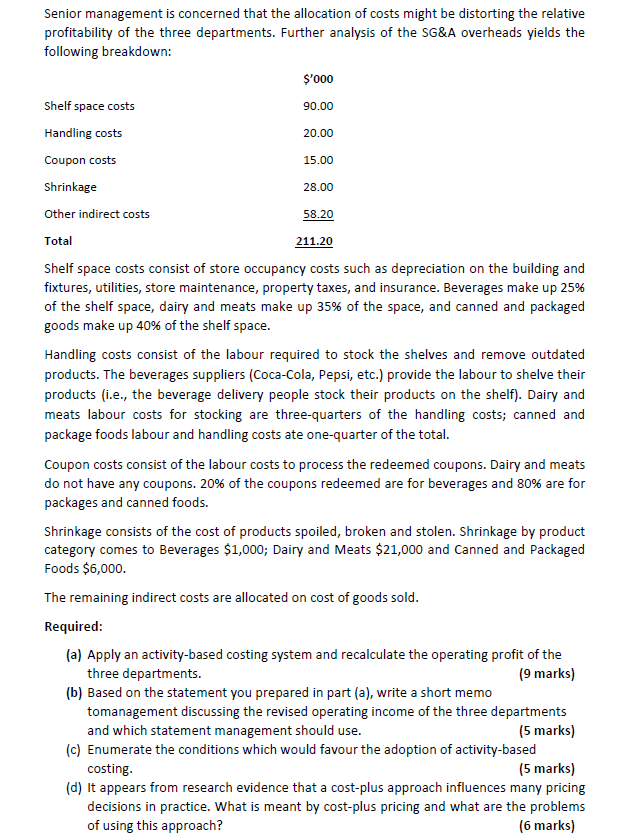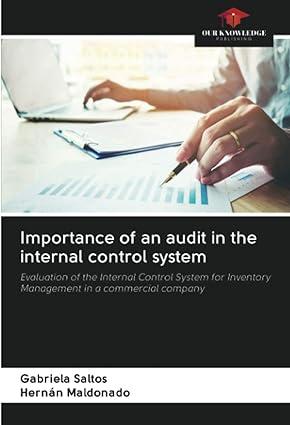

Question 1: (25 marks) Calmerstone has three departments in its store: Beverages, Dairy and Meats, and Canned and Packaged Foods. Each department is headed by a department manager. Operating results for the last month (in thousands) are given in the table. Beverages Dairy & Meats Canned & Packaged Foods Total Sales 250.00 470.00 620.00 1,340.00 200.00 329.00 527.00 1,056.00 Direct costs: Cost of goods sold Indirect costs: SG&A (20% of DC) Operating Profit/(Loss) 40.00 65.80 105.40 211.20 10.00 75.20 (12.40) 72.80 The direct costs consist of the cost of goods sold. Indirect costs consist of selling, general, and administrative (SG&A) costs and are allocated to each department at the rate of 20% of costs of goods sold. Based in the preceding report, Beverages had operating profit of $10,000, Dairy and Meats had operating profit of $75,200, and Canned and Packages Foods reported a loss of $12,400. 28.00 211.20 Senior management is concerned that the allocation of costs might be distorting the relative profitability of the three departments. Further analysis of the SG&A overheads yields the following breakdown: $'000 Shelf space costs 90.00 Handling costs 20.00 Coupon costs 15.00 Shrinkage Other indirect costs 58.20 Total Shelf space costs consist of store occupancy costs such as depreciation on the building and fixtures, utilities, store maintenance, property taxes, and insurance. Beverages make up 25% of the shelf space, dairy and meats make up 35% of the space, and canned and packaged goods make up 40% of the shelf space. Handling costs consist of the labour required to stock the shelves and remove outdated products. The beverages suppliers (Coca-Cola, Pepsi, etc.) provide the labour to shelve their products (i.e., the beverage delivery people stock their products on the shelf). Dairy and meats labour costs for stocking are three-quarters of the handling costs; canned and package foods labour and handling costs ate one-quarter of the total. Coupon costs consist of the labour costs to process the redeemed coupons. Dairy and meats do not have any coupons. 20% of the coupons redeemed are for beverages and 80% are for packages and canned foods. Shrinkage consists of the cost of products spoiled, broken and stolen. Shrinkage by product category comes to Beverages $1,000; Dairy and Meats $21,000 and Canned and Packaged Foods $6,000. The remaining indirect costs are allocated on cost of goods sold. Required: (a) Apply an activity-based costing system and recalculate the operating profit of the three departments. (9 marks) (b) Based on the statement you prepared in part (a), write a short memo tomanagement discussing the revised operating income of the three departments and which statement management should use. (5 marks) (c) Enumerate the conditions which would favour the adoption of activity-based costing. (5 marks) (d) It appears from research evidence that a cost-plus approach influences many pricing decisions in practice. What is meant by cost-plus pricing and what are the problems of using this approach? (6 marks)








